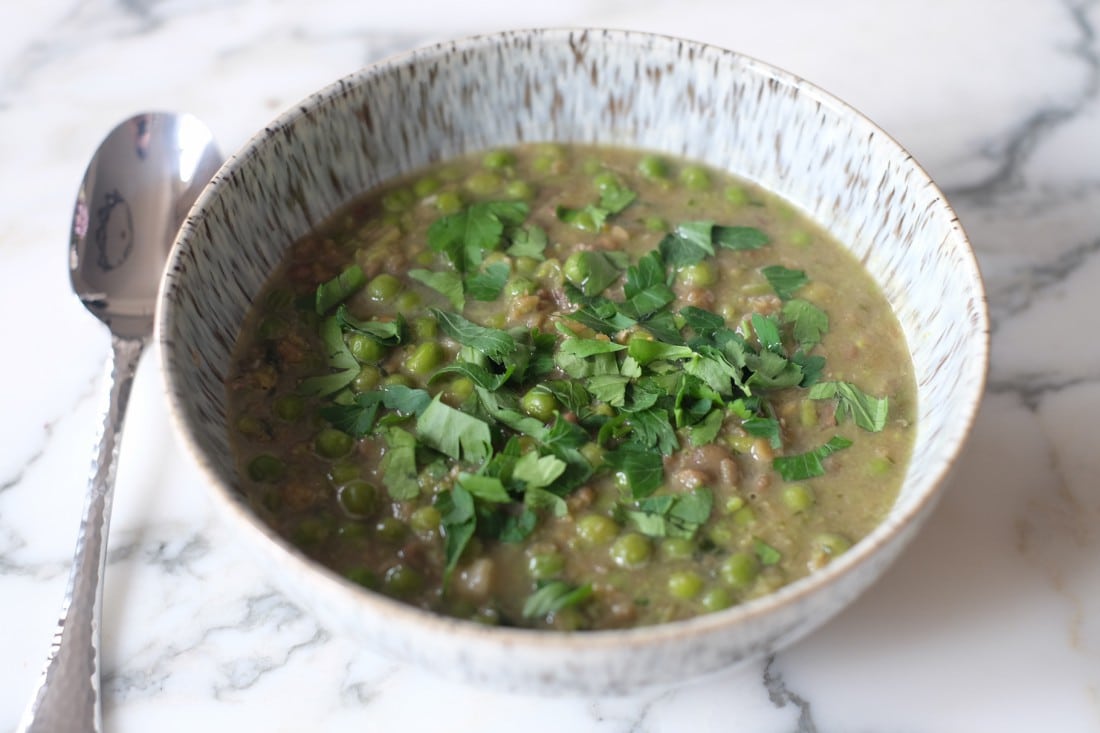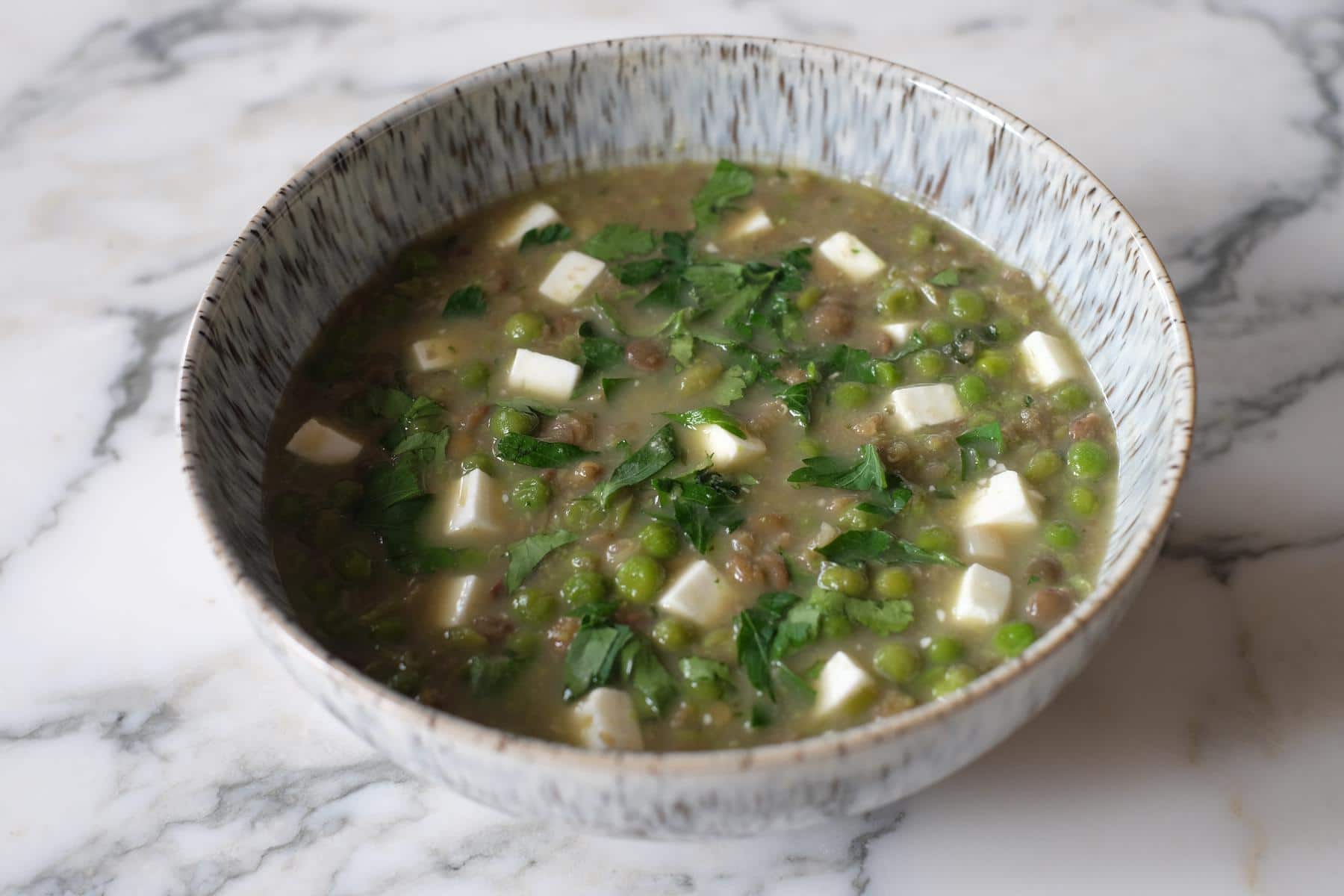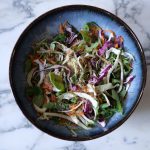The idea of a low-fat diet originated from scientist Ancel Keys in the 1950s. Consumer products, the diet industry and governmental bodies latched onto the idea of zero and low fat products. At the time, there was very little focus on wellness and eating to nourish yourself, and the primary concern of the study was with rising levels of cardiovascular disease. The results were somewhat misconstrued into a powerful advertising message: eat this low-fat product, and you’ll lose fat. Nutritional science has made dramatic leaps and bounds since the 1950s, and it is now clear that Ancel’s study was based on cherry picked data. However, there is still a myth (largely perpetuated by the diet industry and consumer misunderstanding) about the benefits of eating low-fat products.
The main problem with the low-fat mantra is that it doesn’t discriminate between types of fat. Fat is one of those (many) things in life about which quality and source matter as much as quantity. Unfortunately “eat low-fat this” or “new non-fat product!” has been interpreted by the health conscious as “don’t eat any fat in order to be healthy”. So what is the real science behind the low-fat diet? And why is fat good for us?
Fat and heart disease?
Saturated fat was blamed for rising cholesterol levels and therefore heart disease, but heart disease levels continued to sky rocket in the modern population. So is it really fat that is responsible? Studies suggest not (or, at the least, that it is a much more complicated story). Differences in source and type of fat are crucial, as is what we replace fat with in our food.
Saturated fat has been linked to an increased risk in heart disease because it increases “bad” low-density lipoprotein cholesterol, or LDL. However, heart disease risk isn’t all about LDL and not all LDLs are equal. In fact the LDL that saturated fat increases is a generally benign particle, whereas it’s the very low-density lipoprotein (“VLDL”) that are more of a concern as they are able to clog your arteries more easily than LDL and thus further increase your risk of heart disease. Levels of VLDL rise as a result of increased triglyceride levels. What causes an increase in these trigylcerides? It is high-GI carbohydrates not saturated fat that increase triglycerides – these types of carbs also reduce our HDL cholesterol levels (remember, this is the “good” cholesterol). This is the other side of the heart disease picture that gets left out when we demonise fat.
Various studies based on this information have urged for a change in dietary guidelines. More on fat type distinctions below but on the heart disease point: Bad fats (any trans fats and an excess of saturated fats) can raise your cholesterol and increase your risk of heart disease but so can an excess of high GI carbohydrates. Good fats (see below) do not. N.B. Low-GI carbs – that’s pulses, wholegrains, fruit and vegetables – are not linked with an increase in heart disease.
Eating fat and getting fat?
High-fat foods are calorie dense. Fat as a macro-nutrient contains 9 calories per gram (as opposed to the 4 provided by carbohydrate or protein). A high fat diet might more easily become a high calorie diet, which will cause weight gain unless these calories are burned off through exercise. However, that reality cannot be considered in isolation. Full fat products are much more nourishing than their low-fat equivalents. High fat foods (such as avocado or greek yogurt) take longer for our bodies to digest than e.g. carbs and help to balance our blood sugar levels which means that we feel full for longer. This means that we are less likely to reach for (often unhealthy) snacks. The opposite is true for sugary foods, which at a brain level will make you want more and more.
This effect is compounded by the composition of reduced fat foods: manufacturers have to compensate for the lack of taste when the fat is stripped out of a product. They do this with sugar, high-fructose corn syrup (HFCS), artificial sweeteners and other nasties. So not only is your food not satisfying you because it lacks the natural fat content; added sugars are sending triggers to your brain to keep you hungry and contributing to an increased risk in heart disease through the increased VLDL levels we mentioned above. The thought of replacing fat with HFCS in a food is utterly bizarre from a nutritional stand-point. Unfortunately, the mantra of the 90’s was hear the word fat (no distinction on quality) and run away; replace with carbohydrates (no distinction on quality). High sugar highly refined low fat foods were the marketplace response. Of course as our waistlines continued to expand, carbohydrates were then blamed, spear-heading the Atkins movement. Again, misguided. A diet rich in high fibre plant based foods is a great diet. A diet full of highly refined sugar-laden carbohydrates is a terrible one.
The best kinds of fat?
Not all fats are created equal. This is where the confusion perhaps starts because it is unequivocally true that some fats are bad for you, arguably the worst thing for your body. These are trans fats (trans unsaturated fatty acids), which are found in overly processed foods, some margarines and vegetable oils. Avoid them like the plague; trans fat consumption will give you an elevated risk of coronary heart disease, and has also been linked with Alzheimer’s Disease, cancer, diabetes, liver dysfunction, infertility, depression, diminished memory and behavioral aggression (breathe now).
Saturated fats – too much of these is not a good idea (too much of ANYTHING is not a good idea), but some fat is actually essential for the body to function properly as it helps you to absorb a whole range of fat-soluble vitamins found in fruit and vegetables. These are the fats from organic butter, coconut oil and animal fats such as eggs, meat and salmon.
Polyunsaturated fats – there are two types of polyunsaturated fats, omega 3 fats and omega 6 fats. Omega 3 fats are the ones that are absolutely amazing for you – found in oily fish, nuts, seeds and a whole range of other good things. They boost brain power, they’re brilliant for cell growth and repair, help inflammation, and reduce your risk of cardiovascular disease. It is these omega-3 fats that we should be focusing on in our diet.
Omega 6 fats are found in vegetable oils such as sunflower oil, rapeseed oil, canola oil and a whole range of vegetable based oils that were originally marketed as a healthier alternative to olive oil and coconut oil. However, medical and scientific research suggests that a high consumption of omega 6 fats leads to an increased risk of metabolic disorders. Although these studies are not conclusive, there is little nutritional benefit from these fats, especially compared to Omega 3s, so we do not use them in our cooking.
Our favourite food sources of fat:
Eggs: Eggs are so good for you but somehow picked up a bad reputation among the low-fat confusion and the cholesterol confusion (read more on that here). The US dietary guidelines have just absolved eggs of all their previously believed disease causing capacity. Eggs are full of high quality protein, and are a complete protein containing all the amino acids your body needs to help your body grow (making them a great post-workout meal). They are full of vitamin D, B6, B12, zinc, iron and copper. Eggs are probably the cheapest “superfood” you can get. Solely eating egg-white makes minimal nutritional sense (unless your sole dietary aim is low calorie which itself makes minimal nutritional sense): the nutrition is in the yolk.
Avocado: A super source of healthy unsaturated fat, as well as being high in fibre, vitamin B6, magnesium, and vitamin C. Top tip? Peel your avocado skin off rather than scooping it out: a lot of the nutrients hide in the dark green layer just underneath the skin. Avocadoes are such a versatile food: use it in dips, salads, sushi, wraps, sandwiches, smoothies.
Coconut: Coconuts are high in saturated fats and for this reason have been avoided by most low-fat diet programs. However, almost half of a coconut’s fatty nutritional profile is attributed to lauric acid, an anti-fungal, anti-viral and anti protozoa ingredient which acts as an immunity booster. Coconuts are high in dietary fibre, vitamins and minerals. Ideally, source raw whole coconuts and unrefined coconut products. The coconut water and milk you pick off a supermarket shelf is sugar-laden and likely to contain other nasties and be of minimal nutritional benefit. Coconuts are incredibly versatile. You can make granola with coconut flakes, use coconut sugar as a sweetener, put coconut milk in your porridge or coconut oil in your coffee, bake with coconut flour and stir-fry with coconut oil.
Olive oil: Those eating a mediterranean diet live a longer and healthier life. Fact. Olive oil, rich in both omega-3 and 6, is an intrinsic part of this diet and contributes to the benefits of this diet.
Oily fish: A great source of brain-essential Omega-3 fatty acids with their myriad of cognitive, cardio-vascular and immunity benefits. Our favourites for nutrition: wild salmon, sardines, tuna, mackerel.
Nuts and seeds: The easiest snackable high quality plant-based source of healthy fats. Nutrition-wise, in terms of good fats, the “best” nut: walnuts (though our longer answer would be “any one you like enough to eat!”) as it is rich in omega-3 fatty acids. For seeds: seeds are all super too. We try to include sunflower seeds, chia seeds, sesame seeds, linseed/flaxseed and pumpkin seeds in our weekly diet. Different ones are great in different contexts. Don’t forget about ground/milled seeds. We sneak these into our childrens’ porridge and pancakes.
Conclusion and my diet
Think in terms of quality more than quantity. Good fats are about the best things you can put in your body: oils from olives, avocados, oily fish, seeds, nuts and coconuts. This is the stuff that allows the absorption of vital fat-soluble vitamins, gives you the right kind of energy, a bright mind, glowing skin and glossy hair. Bad fats (any trans fats and an excess of saturated fats) are terrible for you – they raise your cholesterol and increase the risk of heart disease. Do not confuse the two or let the bad rep of the latter put you off the former.
I honestly feel sad that so many women are still scared of eating fat. It is just such a shame that the macronutrient shares a name with the body composition we don’t want. Eating fat doesn’t make you fat, unless you eat too many calories. If I read the words “low fat” or “fat free”, I view the product highly suspiciously and interpret those words as “probably full of empty calories and trashy crap that I don’t want in my body”. I eat a lot of fat. Coconut oil, olive oil, avocados, nuts, seeds, full fat dairy products, eggs and oily fish are staples in my diet. If you take one message from this post, let it be this: Make sure you eat enough good fat. You will not flourish without it.
The recipe here is for a soup that is naturally low in fat but rich in flavour and very filling because it is high in plant-based protein and fibre from lentils and peas. So delicious, and even more so with a little bit more fat – I love my soups best with a piece of buttered sourdough on the side and cubed feta or shaved parmesan on the top.
LENTIL, PEA AND PARSLEY SOUP
Recipe:
Vegetable stock (you can make this however you like, but here is a guide if you haven’t made it before!)
- 1 tbs extra-virgin olive oil
- 1 onion, chopped
- 1 clove garlic, crushed
- 1 carrot, chopped
- 1 celery stalk, chopped
- Vegetable trimmings: I use the outer skins of onions, potatoes, sweet potatoes, carrots, the end stalks of green beans, the ends of courgettes, the kind of stuff we collect for the pigs or the compost heap as my grandmother used to tell me. Any vegetable bits, including those you don’t actually eat. This stuff boils up really great flavour!
- 1.5 to 2 litres water
- Salt, pepper, celery salt or your favourite herbs and seasonings.
Soup:
- 1 tbs olive oil
- 1bunch spring onions, finely sliced
- 1 clove garlic, crushed
- 400-500g cooked lentils (I have used puy, green or red lentils, or a mixture thereof. I cook them myself, but if you must, use 2 cans of drained lentils)
- 1 tbs parsley, finely chopped
- 200g frozen peas or petits pois
To serve:
- 1 tbs parsley, finely chopped
- 1 tbs mint, finely chopped
Method:
Make the stock first. Heat the oil in a pan, add the onion and fry until softened and just turning brown. Move the onion to a large pot and add the other vegetables and the vegetable trimmings and season well. Pour over the water and bring to the boil. Allow it to simmer for a minimum of an hour, preferably 1.5-2 hours. Add more water as required if it reduces too much. Drain, keeping only the stock. While this is simmering I usually cook the lentils, which I have rinsed and pre-soaked in cold water overnight.
Using the pan used for the onion, heat the other tbs of oil and add the spring onions and garlic. Fry until just turning brown. Then put this, the stock, herbs and lentils all into the big pot and allow it to simmer for a few minutes. Add the peas and allow it to cook for a further few minutes. Your soup is now cooked and ready! I then blend half of it in a food processor or using a hand blender, and then combine the blended part and the unblended part for serving, but obviously you can leave it all chunky or all blended depending on what consistency you like best. Serve with mint and parsley. Sometimes I add cubed feta, crème fraiche, shaved parmesan, healthy croutons or chopped gammon. I also often add a little turmeric and/or spirulina into my bowl, which are two superfood powders that really actually are superfood powders nutritionally and not just a trendy gimmick. Just be careful because spirulina makes anything taste like stagnant pondwater and turmeric makes anything taste like you’re suddenly in India. It’s a fine line between nutrition and taste sometimes! Anyway, this recipe is super versatile and also happens to be my absolute favourite lunch in the whole world ever! Enjoy!
Photo credits: bowl is part of the Halo range by Denby








